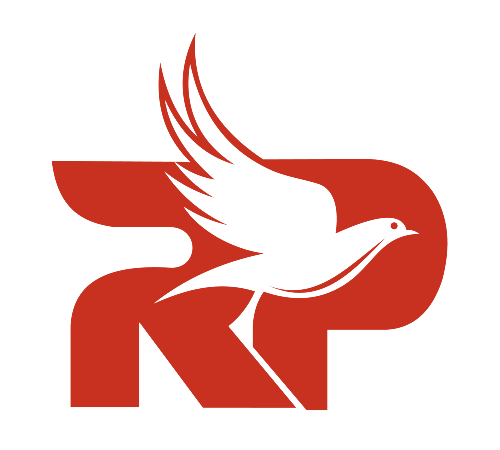A ROYAL VISIT 1926
The Duke of York, later to become King George VI, inspecting a pigeon with Lt. Col. A H Osman at the show 1926.
A ROYAL VISIT 1970
HRH Princess Alexandra enjoying a visit to the show in 1970.
The Show Over The Years Since 1926
Sometime in the summer of 1926 a letter was received by the Editor of The Racing Pigeon Weekly, Lt. Col. A. H Osman, OBE suggesting there should be a reunion of those people who served in the pigeon forces during the war. Accordingly a Show, a Dinner and even a Race were organised for Thursday and Friday November 22 and 23 1926. The Dinner Secretary was W. H. Barnes, a past secretary of the London North Road Combine, who had retired to Leigh on Sea, Essex. The Show Secretary was Dick Ingham who continued in that position, or in approximately that position as the history will show, until the equivalent job was taken by his son John. The entry was 1066 birds in 15 classes and the contemporary report at the time includes the interesting information that 328 red chequers were exhibited and that 8 pieds won prizes.
The high spot of the show must have been the visit of His Royal Highness The Duke of York, subsequently King George VI, to the show; the first time that Royalty had ever so honoured a pigeon function. The show opened at 2.00 on the thursday with judging beginning at 11 o’clock and closed at 9 o’clock on Friday 23rd.
At that time the son of Col. A. H. Osman, Major W. H. Osman, had his loft at 19 Doughty Street and a release of pigeons was made as a short distance race from outside the Show Hall back to the lofts where there were two time keepers to see who won. It is reported that one of the birds that was lost there was the famous Doughty Mary which had flown Thurso four or five times and yet failed to make the journey of approximately half a mile!
Over the years until 1938 the show was held regularly, and the R.P. Pocket diary for 1970 contained the
complete list of all known trophy winners.
Unfortunately in the early days there wasn’t a trophy for best in show but the leading trophy was The Old Bird Challenge Cup. From 1939 to 1943 because of the war the show show was not held but it recommenced in 1944 when it was held in December. From 1946 until 1948 the show was held in January then in 1951 brought to November and moved to Battersea Baths, an assembly hall on a very modest scale indeed. In 1958 there were in fact two Old Comrades Show held; one in January and one in November. In 1958 none at all were held followed by one in January 1960. The show then settled down in January where it continued until 1964. It had now moved to the Seymour hall and this hall is remembered by many with great affection.
The Olympiad of 1956 which was combined with The Old Comrades Show of that year was perhaps the greatest year because it represented the culmination of the work done by Major Osman in involving Britain in the International Federation. His son, Colin (assisted by Ron Bissett) was the organiser for the National Homing Union and although Major Osman was then in declining health it was fitting that he should have been one of the guests of honour at the Luncheon, for in one sense this was the crowning moment of all that he had worked for over so many years.
In 1966 the show came back in November and thereafter it has remained November or the first week in December. The show moved from Seymour Hall to the Horticultural Hall but unfortunately the Horticultural Hall was not able to guarantee a regular booking.
Additional problems of costs and visitor parking meant that a change to the only other hall avaliable at the right sort of price, Alexandra Palace, was inevitable.
This hall held the Olympiad successfully and for many reasons the change was desirable. It was in the 70’s that the decision was made that was to change to show from Friday and Saturday to Saturday and Sunday. Again this was a forced decision brought about by the fact the railways would not except the large quantities of birds that still travelled by rail to the Old Comrades Show and the changeover was well accepted by the fanciers. The last show there in 1974 was exceptionally well attended and as always there was a sprinkling of American fanciers not perhaps as great as 1973 when ‘The American Safari’ brought a whole plane load over to visit but increasingly the old Comrades Show is being recognised as the international mecca for pigeon fanciers.
As can be seen there has been many changes since the first show. And in the last years the show at Doncaster racecourse has continued to grow in visitor numbers and remains at the top of the fancier’s calendar for live auctions, purchasing all goods and pigeons and reuniting with fellow friends.
The show still remains the longest running and the most important of British shows, perhaps above all it has given more pleasure to fanciers then any comparable show. The organisers intend that it will do so in the future.
– Article snippets from Pictorial International Magazine
Alexandra Palace
Here are some views of the show when held at Alexandra Palace with judging taking place.
Also included is a photo of the late Major W. M. Osman presenting a trophy back in 1951.
“Welcome to the future of shows.”
We are looking forward to continuing to keeping the show held at Doncaster at the heart of the fancier and in the history books as the greatest pigeon event of the year. Hope to meet you there!
